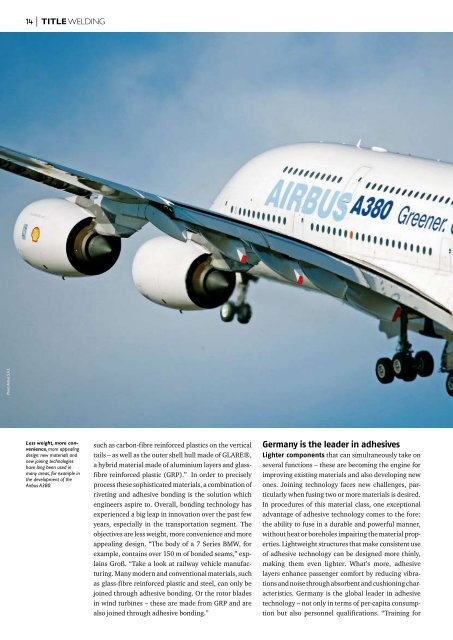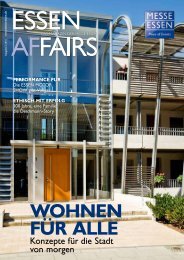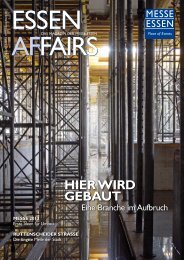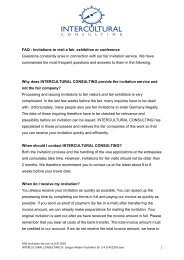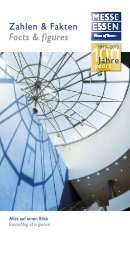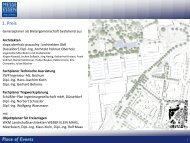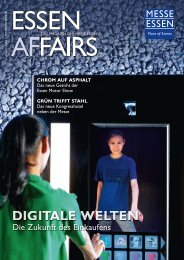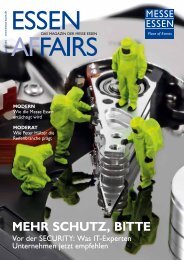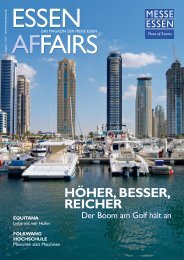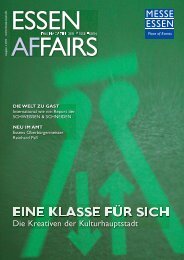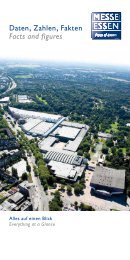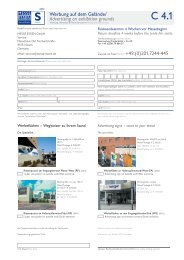Issue 1/2009 - Messe Essen
Issue 1/2009 - Messe Essen
Issue 1/2009 - Messe Essen
Create successful ePaper yourself
Turn your PDF publications into a flip-book with our unique Google optimized e-Paper software.
Photo: Airbus S.A.S.<br />
14 | title welding<br />
Less weight, more convenience,<br />
more appealing<br />
design: new materials and<br />
new joining technologies<br />
have long been used in<br />
many areas, for example in<br />
the development of the<br />
Airbus A380.<br />
such as carbon-fibre reinforced plastics on the vertical<br />
tails – as well as the outer shell hull made of GLARE®,<br />
a hybrid material made of aluminium layers and glassfibre<br />
reinforced plastic (GRP).” In order to precisely<br />
process these sophisticated materials, a combination of<br />
riveting and adhesive bonding is the solution which<br />
engineers aspire to. Overall, bonding technology has<br />
experienced a big leap in innovation over the past few<br />
years, especially in the transportation segment. The<br />
objectives are less weight, more convenience and more<br />
appealing design. “The body of a 7 Series BMW, for<br />
example, contains over 150 m of bonded seams,” explains<br />
Groß. “Take a look at railway vehicle manufacturing.<br />
Many modern and conventional materials, such<br />
as glass-fibre reinforced plastic and steel, can only be<br />
joined through adhesive bonding. Or the rotor blades<br />
in wind turbines – these are made from GRP and are<br />
also joined through adhesive bonding.”<br />
Germany is the leader in adhesives<br />
Lighter components that can simultaneously take on<br />
several functions – these are becoming the engine for<br />
improving existing materials and also developing new<br />
ones. Joining technology faces new challenges, particularly<br />
when fusing two or more materials is desired.<br />
In procedures of this material class, one exceptional<br />
advantage of adhesive technology comes to the fore:<br />
the ability to fuse in a durable and powerful manner,<br />
without heat or boreholes impairing the material properties.<br />
Lightweight structures that make consistent use<br />
of adhesive technology can be designed more thinly,<br />
making them even lighter. What’s more, adhesive<br />
layers enhance passenger comfort by reducing vibrations<br />
and noise through absorbent and cushioning characteristics.<br />
Germany is the global leader in adhesive<br />
technology – not only in terms of per-capita consumption<br />
but also personnel qualifications. “Training for


